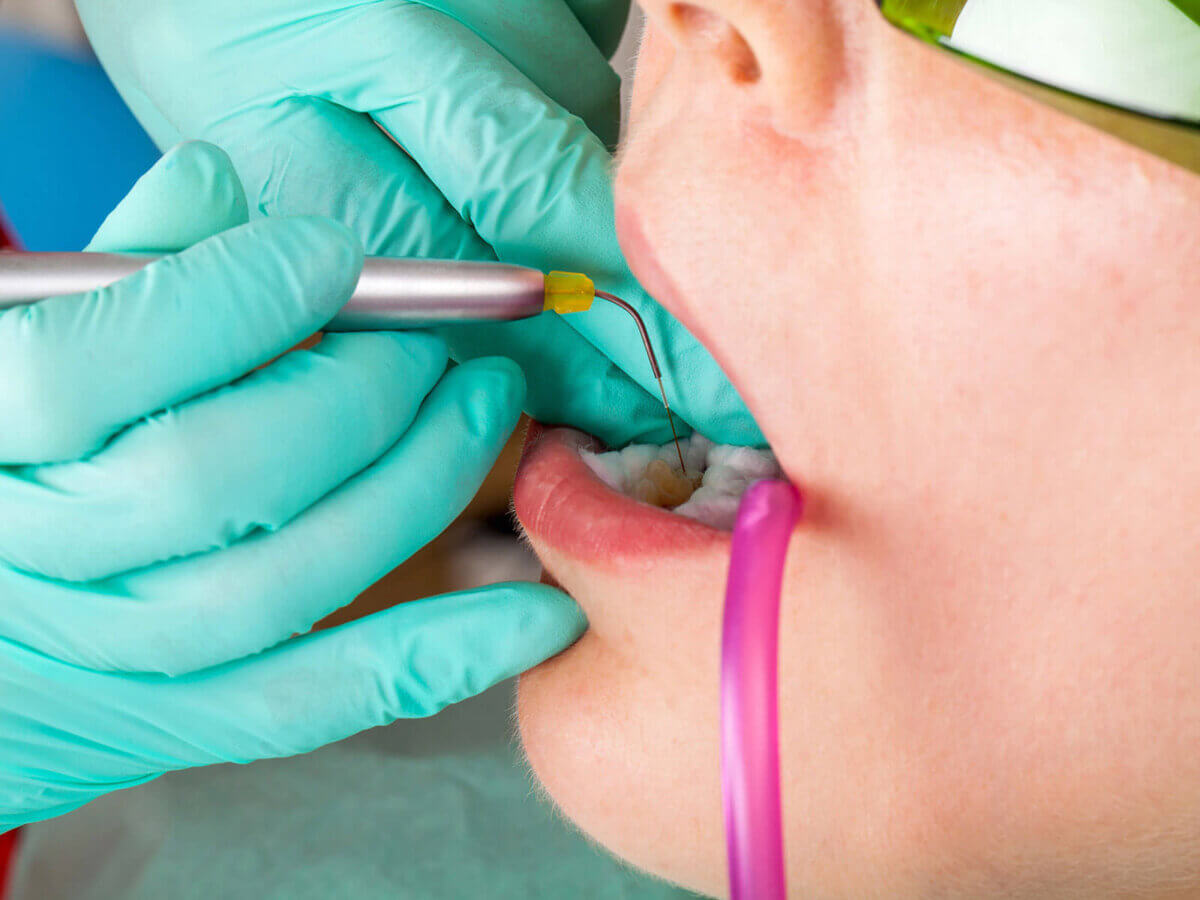Blog
Dental hygiene tips for healthy teeth & gums

How Laser Dentistry Can Help Gum Disease
Periodontal disease, often known as gum disease, is a common oral health disorder that affects the gums and supporting structures of the teeth. Scaling, root planing, and, in severe situations, surgical procedures are standard therapies. However, the introduction of Laser dentistry has transformed the approach to gum disease therapy. This detailed guide will examine how Laser dentistry alters gum disease care by providing patients with a less invasive, efficient, and effective alternative.
Understanding Periodontal Disease:
Gum disease is a chronic disorder characterized by gum inflammation and infection. It can range from mild gingivitis (redness and swelling of the gums) to severe periodontitis (damage to the supporting bone and tissues around the teeth). These are common signs of bleeding gums, chronic poor breath, receding gums, and tooth movement.
Laser Dentistry’s Role in Gum Disease Treatment:
1. Least Invasive Procedures:
One of the critical benefits of Laser in dentistry in treating gum disease is that it is minimally intrusive. Laser devices use concentrated light beams to target and remove bacteria and sick tissue without typical surgical equipment.
2. Accuracy and precision:
Lasers enable precise and accurate therapy. Dentists can target and remove unhealthy tissue while keeping healthy gums and causing minimal harm to the surrounding structures.
3. Less Discomfort:
Laser therapies are often associated with less discomfort than older treatments. Patients frequently report decreased pain and edema, resulting in a more pleasant postoperative experience.
4. Improved Healing:
Laser dentistry improves speedier healing by boosting blood flow and collagen synthesis. Compared to traditional procedures, this speeds up the regeneration of healthy gum tissue and shortens the healing time.
5. Bacterial Reduction:
Lasers kill germs and remove infected tissue, lowering the bacterial load in gum pockets. This is critical for preventing gum disease and maintaining long-term dental health.
6. Gum Contouring and Reshaping:
Laser dentistry helps treat gum disease and cosmetic operations. It can reshape and contour the gums, enhancing the smile’s attractiveness.
7. Gum Pocket Treatment:
Laser technology is instrumental in treating deep gum pockets caused by severe gum disease. The laser can get into these pockets, clean them out, and encourage healing.
Standard Laser Gum Disease Procedures:
a. Laser-Assisted New Attachment Procedure.
LANAP is a laser-based gum disease treatment technique. A precise laser wavelength is used to eliminate bacteria and damaged tissue, encourage bone regeneration, and create a clean environment for healing.
b. Laser Gum Contouring:
Lasers are used in this cosmetic operation to reshape and contour the gums, improving the symmetry and appearance of the smile.
c. Periodontal Pocket Reduction:
Using Laser dentistry, periodontal pockets can be targeted and reduced in depth, preventing further gum disease progression.
The Benefits of Laser Dentistry for Gum Disease Treatment:
a. Minimally Invasive:
Laser dentistry does not require typical surgical instruments, so it is a less invasive approach to treating gum disease. This decreases patient suffering and speeds up healing.
b. Precision and Accuracy:
Lasers enable exact targeting of infected areas while protecting healthy tissue. This accuracy leads to good treatment outcomes while also lowering the danger of damage to neighboring structures.
c. Less Discomfort and Swelling:
Compared to traditional treatments, laser operations frequently result in less discomfort and swelling for patients. This can make postoperative recovery more comfortable.
Considerations for Patients and Potential Limitations:
a. Consultation with a Dentist:
Patients with gum disease should meet with a dentist to establish the best treatment option. While Laser dentistry has significant advantages, it is only appropriate for some circumstances.
b. Individual Variations:
The efficiency of Laser dentistry may differ between individuals. Consider factors such as the severity of the gum disease, overall health, and personal reaction to treatment.
c. Cost Factors:
The cost of Laser dentistry procedures can vary. Patients should consult their dentist about treatment alternatives and associated costs to make informed selections.
Conclusion:
Laser dentistry has emerged as a game-changing technique in treating gum disease, providing patients with a less intrusive, more precise, and efficient alternative to older treatments. The advantages of laser dentistry, from its ability to target germs and sick tissue to promote speedier healing and deliver cosmetic benefits, make it an increasingly popular choice in periodontal care. Patients with gum disease symptoms should speak with their dentist to see if laser dentistry is a good choice for them or not.
